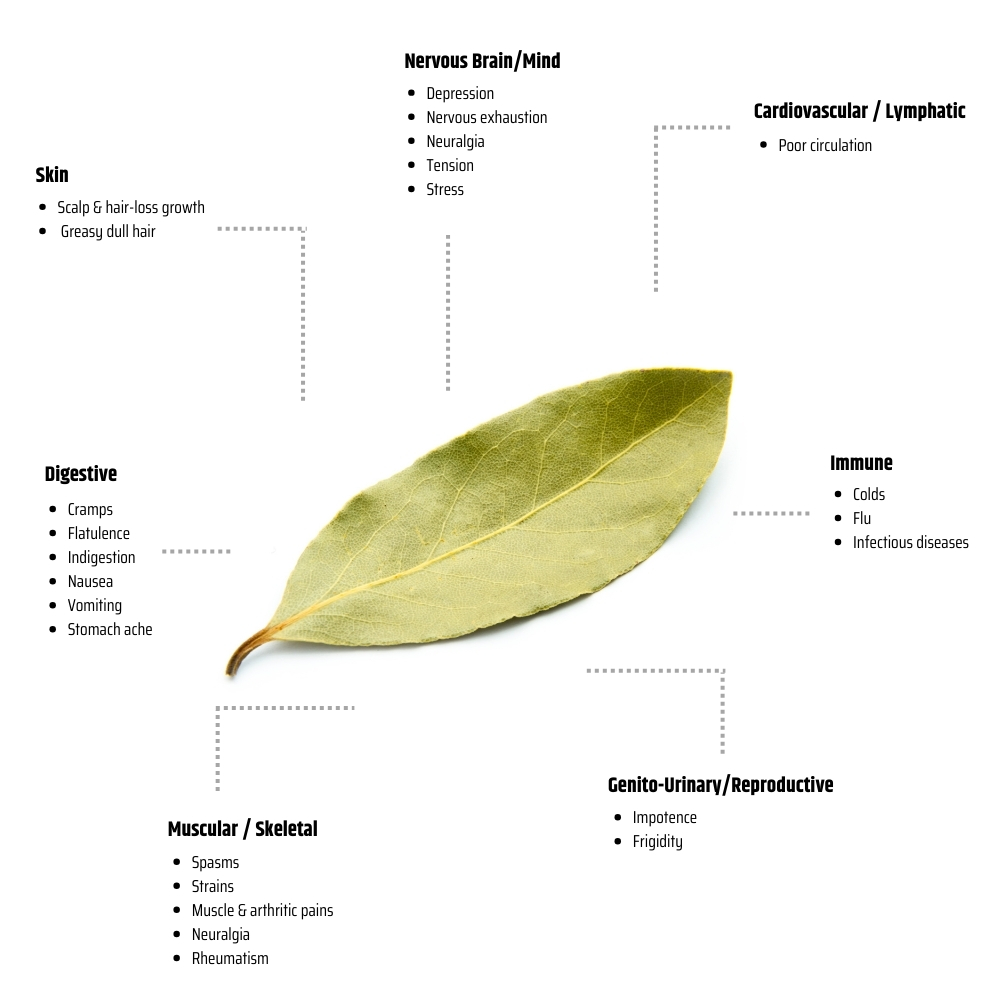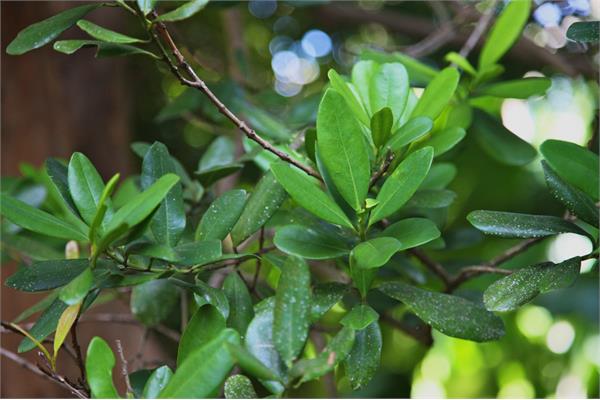
Australian Owned and Operated We have been proudly running for over 30 years

100% Pure & Natural Our products are sourced from the highest quality suppliers and growers from around the world

Not Tested on Animals None of our products are tested on animals

Vegan Friendly Our products are plant based and vegan friendly
Bay
Pimenta racemosa
Source: Leaves
Origin: India
Energetics: Yang
Extraction Method: Steam Distilled
Scent: An enticing spicy and masculine aroma.
Blends Well With: Coriander, Eucalyptus, Ginger, Juniper, Lavender, Lemon, Orange, Rosemary, Thyme and Ylang Ylang.
About
Often used in hair tonics, splash on colognes and other products. The bay rum oil is steam distilled from the leaves of the West Indian evergreen tree and is used in hair tonics, not only for its manly notes but aids in scalp health. Don't forget to use this in your made for male soaps or body washes either! Bay leaf oil is known for its analgesic properties and facilitating muscle and joint pain relief.
Historical Snippets
Bay Essential Oil is from “the spice tree” or “bay rum tree”. The Bay leaf is brewed into teas and also may help keep the bugs off and away from you and in your pantry. Unpleasant odours were also masked by hanging Bay branches in dwellings. Also used as a native febrifuge using an sponge bath technique on the sick.
Key Constituents
Below constituent ranges comprise 68% of the data within the normal distribution curve.
Growing conditions or plant chemotype can change constituent levels or constituents themselves.
- Eugenol 44.4–56.2% (58.10% current batch)
- b-Myrcene 6.4–25.0% (21.77% current batch)
- Chavicol 9.3–21.6% (2.41% current batch)
- Linalool 1.7–6.0% (2.53% current batch)
- (þ)-Limonene 0.8–3.9% (3.36% current batch)
- 1-Octen-3-ol 0.9–2.0%
- 1,8-cineole 0.2–1.4%
- Methyleugenol 0–1.4% (3.36% current batch)
- (E)-b-Ocimene 0–1.4%
- Terpinen-4-ol 0.3–1.2%
- 3-Octanone 0.8–1.1%
- d-Cadinene 0.6–1.0%
- 3-Octanol 0.6–1.0%
- p-Cymene 0.1–1.0%
- Estragole trace–0.1%
How To Use
Diffuse: Add a few drops to a diffuser to disperse around the room
Topically: Dilute essential oil with any carrier oil at a 2.5% ratio. This equates to 2.5ml essential oil/oils in total mixed with 100ml of chosen carrier oil. 1ml of essential oil is approximately 20-22 drops of oil. Decant into a roller or glass bottle with eye dropper to apply easily or a larger bottle if using for massage. Please note this dilution rate is for adults and children over the age of 6. More information on children and essential oils is on our blog page. Essential Oils should not be used directly on the skin without mixing first with a carrier oil
Inhalation: Add 1-2 drops essential oil to a tissue and inhale at a distance while ensuring that the oil does not come into direct contact with the skin. Alternatively, you can smell the oil directly from the bottle.
Shelf Life
Our freshly decanted Bay essential oil will last for 2-3 years minimum from when you open your amber glass bottle if stored correctly.
Primary Storage Considerations: Keep away from direct light (U.V. radiation). Keep in the amber glass bottle with lid tightly closed. Only open when you need to and decant into a smaller "working" amber glass bottle if possible (and label so you know what is in it). This is to reduce oxidation.
Secondary Storage Considerations: Keep in a refrigerator at around 4 degrees celsius.
Safety
General
Some essential oils may cause photosensitivity to the skin - Use diluted in Jojoba or other complete carrier oil.
Do not ingest essential oils.
Do not apply to eyes, sensitive areas or mucous membranes.
The information on this website is not intended to be used in the diagnosis, treatment or mitigation of any physical or mental illness. Ahimsa Oils offer no advice or recommendations only general information. No therapeutic claims are made within.
Pregnant women, nursing mothers and children should not use essential oils without first consulting an appropriately trained healthcare practitioner.
The statements on this website have not been evaluated by the TGA. David Bosley however worked for a long period in consultation with the TGA to ensure correct labelling with reference to the Ahimsa Oil product range.
Specific
Hazards: Drug interaction; may contain estragole and methyleugenol; may inhbit blood clotting; skin sensitization (low risk); mucous membrane irritation (low risk).
Cautions (oral): May interact with pethidine, MAOIs or SSRIs. Anticoagulant medication, major surgery, peptic ulcer, haemophilia, other bleeding disorders.
Maximum dermal use level: Tisserand & Young - 0.9%
A maximum of 0.9% is recommended for dermal use based on 56.2% eugenol content and a limit of 0.5%.
References
Tisserand, R., & Young, R. (2014). Essential Oil Safety: Second edition.
McHale et al 1977; Tucker et al 1991a; Abaul & Bourgeois 1995; Jirovetz et al 2007



 Available for $100 orders and over
Available for $100 orders and over

@PLEMA@360x240.jpg)



